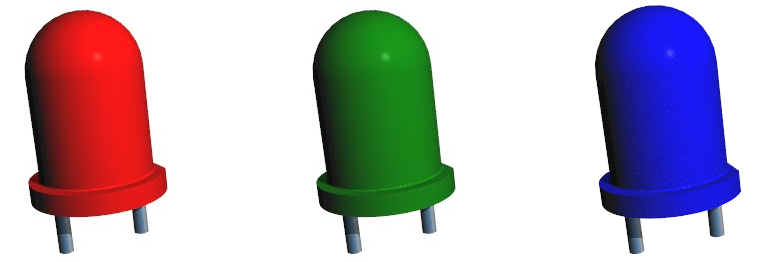Light Emitting Diodes (LEDs) are a popular choice for providing visual indicators on PCBs (Printed Circuit Boards) due to their efficiency, longevity, and the variety of colors they can produce.

LEDs
There are several different types of LEDs that can be used on PCBs, including:
•Through-Hole LEDs: These are the traditional, commonly seen LEDs with two leads that can be inserted into holes drilled into the PCB, and then soldered into place on the other side. They are available in a variety of sizes and colors, and can be used for a wide range of applications.
•Surface Mount Device (SMD) LEDs: These LEDs are designed to be soldered directly onto the surface of the PCB. They are much smaller than traditional through-hole LEDs, which makes them ideal for applications where space is at a premium. They also allow for automated assembly, which can lower manufacturing costs for large production runs.
•Chip-On-Board (COB) LEDs: This is a method of LED packaging which involves directly mounting the LED semiconductor die onto a PCB, and then wire bonding the die to the electrical contacts. A glob of epoxy or plastic is usually used to cover the die. COB LEDs can be very small and provide high light output.
•Integrated LEDs: Some components, such as switches or connectors, may have LEDs integrated directly into them. This can provide a convenient way to add visual indicators without needing to add separate LED components to the PCB.
Each type of LED has its own advantages and considerations, including size, power consumption, brightness, color, and cost. The best choice depends on the specific requirements of your project. As always, refer to the manufacturer's data-sheet for detailed information about any specific LED component.